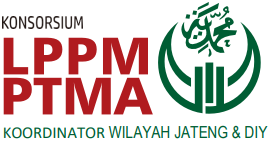Salt Marketing Strategy Design Using The SWOT - STP Method
DOI:
https://doi.org/10.53017/uje.177Keywords:
Salt, SWOT, STPAbstract
Marketing strategy is an important factor to achieve the success of marketing a product. Kugar Sari Laut is a salt business group that produces salt consumption and salt innovation. During the COVID-19 pandemic, Kugar Sari Laut sales turnover decreased by 50%. Therefore, for the company's sustainability, it was necessary to design a better marketing strategy. This study presents a marketing strategy design using combination SWOT and STP methods. SWOT (Strengths, Weakness, Opportunities, and Threats) method was used to identify marketing systems in Kugar Sari Laut. The salt quality identification survey was conducted to 400 respondents of salt users in Kebumen Regency. Observation of internal and external factors was carried out to the manager of Kugar Sari Laut. SWOT analysis results in four internal criteria (material, method, machine, person) and two external criteria (needs, competitors). Based on it, marketing strategy was designed using the STP method (Segmenting, Targeting, and Positioning). The segmentation aspect consists of two criteria: demographic and geographic. There were six criteria of targeting: method, people, demographic, geographic and trial duration. salt packaging variations are applied to the positioning aspect. The next process was testing new marketing strategy for two months. Wilcoxon test was used to validate the results of this process. The validation shows that there was a positive influence on the implementation of new marketing strategy.
Downloads
References
D. H. Wibowo and S. Zainul Arifin, “Analisis strategi pemasaran untuk meningkatkan daya saing UMKM (Studi pada Batik Diajeng Solo),” Jurnal Administrasi Bisnis (JAB), vol. 29, no. 1, 2015.
R. F. Mohamad, “7 Strategi Pemasaran Produk Yang Harus Anda Coba,” jurnal.id, 2020. https://www.jurnal.id/id/blog/strategi-pemasaran-produk-yang-harus-anda-coba/ (accessed Jan. 05, 2020).
H. Wijaya and H. Sirine, “Strategi segmenting, targeting, positioning serta strategi harga pada perusahaan Kecap Blekok di Cilacap,” Asian Journal of Innovation and Entrepreneurship, vol. 1, no. 03, pp. 175–190, 2016.
P. G. Widjaya, “Analisis Segmenting, Targeting, Positioning dan Marketing Mix pada PT. Murni Jaya,” Agora, vol. 5, no. 1, 2017.
M. Hartati and R. Rohim, “Perancangan Strategi Pemasaran dengan Menggunakan Metode Swot di CV. Sekar Sari Roti Pekanbaru,” Jurnal Teknik Industri, vol. 2, no. 2, pp. 138–147, 2016.
T. P. H. Atmoko, “Strategi Pemasaran Untuk Meningkatkan Volume Penjualan Di Cavinton Hotel Yogyakarta,” Journal of Indonesian Tourism, Hospitality and Recreation, vol. 1, no. 2, pp. 83–96, 2018.
F. F. Ismail and D. Sudarmadi, “Pengaruh sistem informasi akuntansi dan pengendalian internal terhadap kinerja karyawan PT. Beton Elemen Persada,” Jurnal Akuntansi, Audit Dan Sistem Informasi Akuntansi, vol. 3, no. 1, pp. 1–13, 2019.
D. R. Indah, “Analisis SWOT pada Saqinah Swalayan di Kota Langsa,” Fakultas Ekonomi, Universitas Samudra, 2015.
D. B. Consultant, “Data Bee Consultant,” databee.id, 2020. .
Downloads
Published
How to Cite
Issue
Section
License
Copyright (c) 2022 Lukman Hanif, Widyastuti

This work is licensed under a Creative Commons Attribution-NonCommercial 4.0 International License.





